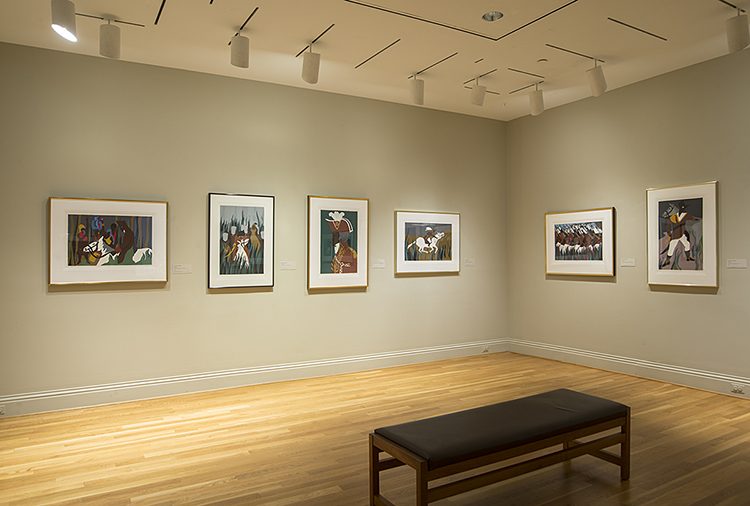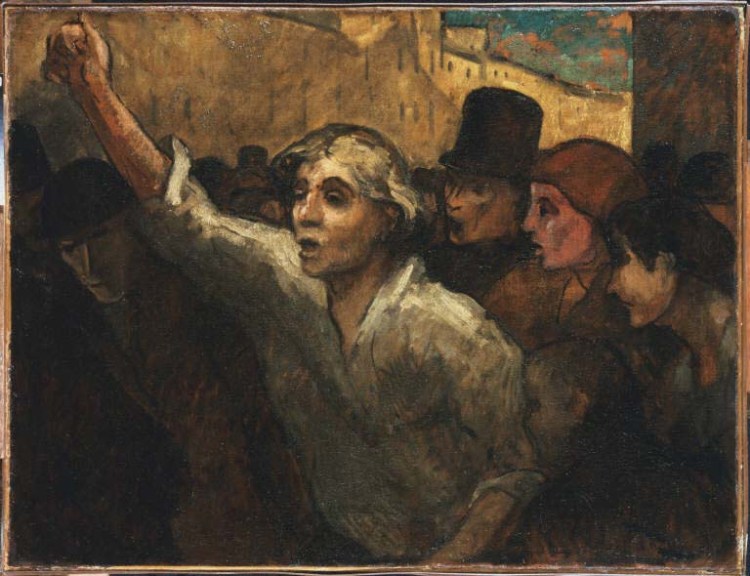
Installation view of The Life of Toussaint L’Ouverture at The Phillips Collection. Photo: Lee Stalsworth
On April 30th, The Phillips Collection will say goodbye to The Life of Toussaint L’Ouverture by artist Jacob Lawrence. The series portrays the life of the former slave turned leader of Haiti’s independence movement. Printmaker and artist Lou Stovall worked closely with Jacob Lawrence during his lifetime, getting to know him both as an artist and as a friend. Stovall spoke about Lawrence’s legacy with the Phillips in a 2001 interview: “He (Lawrence) painted people who changed the lives of other people, people who dedicated themselves to justice and honor.”
Jacob Lawrence utilized his artistic talents in a way that allowed him to portray his narratives in a most captivating way. He explored both realism and abstraction, with personal vision and popular style, said Stovall. The Life of Toussaint L’Ouverture will surely be missed by staff and visitors alike. In the words of Lou Stovall, “The triumph of the human spirit is to rise above limitations, to create a sense of order, a place of well-being, an attitude of possibilities, and a desire for accomplishment. Together, Jacob and I did that.”
Elizabeth Federici, Marketing & Communications Intern

